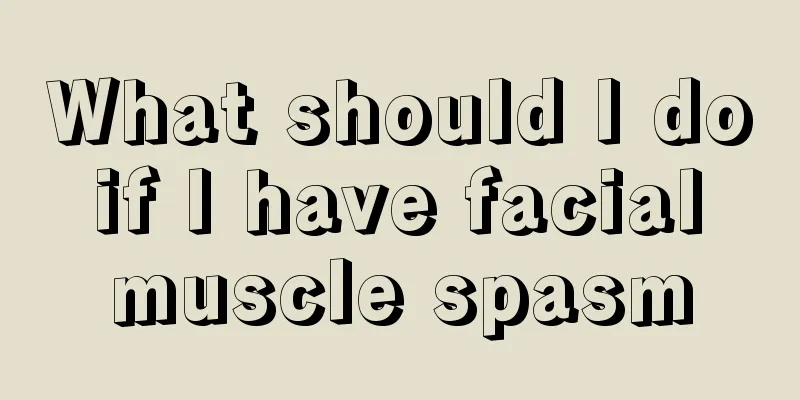How to treat moles on the buttocks

|
The area where hemorrhoids grow is very private, and many people feel embarrassed after suffering from hemorrhoids. They do not go to the hospital for treatment due to face. Over time, the hemorrhoids will become more and more serious. There are many methods for treating hemorrhoids, including surgery, drugs, and local medications. Different methods of treating hemorrhoids will have different effects, but it is best to use the medication under the guidance of a doctor. How to treat mole sores on the buttocks? 1. Drug treatment method Injection therapy: Currently, many countries and regions use injection therapy to treat hemorrhoids, which is a method of injecting drugs into hemorrhoids. The injections commonly used in clinical practice mainly include sclerosing and atrophic agents and hemorrhoidal necrotic and exfoliative agents. Sclerosing agents are suitable for internal hemorrhoids of all stages and are currently commonly used in clinical practice. However, after the aseptic inflammatory reaction caused by the drug disappears, the fibrosis contraction and squeezing effects gradually ease, and hemorrhoids are prone to recurrence. If the injection site is too shallow, it is easy to cause mucosal ulceration and mucosal abscess. If it is too deep, it is easy to cause hardening of the anal tissue. If the dosage is too large, it can cause necrosis and massive bleeding. The drug solution seeping beyond the tooth line can cause severe anal pain, edema or thrombosis. Excessive dosage of necrotizing agent can often cause postoperative necrotic bleeding or infection and ulcer formation on the necrotic surface, especially extensive tissue necrosis or infection. Not only will the treatment time be long, but the scar contraction can also cause sequelae of anal stenosis. 2. Surgical treatment Large internal hemorrhoids and those that do not respond to injection sclerotherapy can be treated with rubber band ligation, which causes the hemorrhoid to shrink and fall off painlessly. Vacuum ligation can be performed at intervals of 2 weeks or longer. Generally, 3 to 6 ligations are required to cure the disease. Treatment may also include using lasers, infrared light (infrared photocoagulation), or an electrical current (electrocoagulation) to destroy the hemorrhoids. If these methods fail, surgical resection may be done. What causes hemorrhoids? 1. Anatomical reasons: When a person is standing or sitting, the anus and rectum are located at the lower part. Due to gravity and the pressure of internal organs, the upward venous return is greatly hindered. The rectal veins and their branches lack venous valves, so blood cannot flow back easily and is prone to congestion. Its blood vessels are arranged in a special way and pass through the muscular layer at different heights, which makes them easily compressed by fecal matter, affecting blood return. The veins pass through the loose tissue of the submucosal layer and lack stent fixation around them, making them prone to expansion and buckling. 2. Genetic relationship: The venous wall is congenitally weak, with reduced resistance, and cannot withstand the pressure within the blood vessels, thus gradually expanding. 3. Occupational relationship: Standing or sitting for a long time, carrying heavy loads for a long time, affects venous return, slows blood flow in the pelvis and causes congestion of abdominal organs, causing excessive filling of hemorrhoidal veins, decreased tension of venous walls, and easy congestion and dilation of blood vessels. Insufficient exercise, reduced intestinal motility, slow downward movement of feces, or habitual constipation can compress and stimulate the veins, causing local congestion and blood reflux obstruction, resulting in increased pressure in the hemorrhoidal veins and reduced resistance of the venous wall. 4. Local irritation and improper diet: Exposure to cold or heat in the anus, constipation, diarrhea, excessive drinking and eating spicy food can all irritate the anus and rectum, causing congestion of the hemorrhoidal venous plexus, affecting venous blood return and resulting in a decrease in the resistance of the venous wall. 5. Increased anal venous pressure: Cirrhosis, liver congestion and incomplete compensation of cardiac function can cause anal vein congestion and increased pressure, affecting rectal venous blood return. 6. Increased intra-abdominal pressure: Intra-abdominal tumors, uterine tumors, ovarian tumors, prostate hypertrophy, pregnancy, overeating or sitting on the toilet for too long can all increase the intra-abdominal pressure and hinder the venous blood return. |
<<: Pain on the upper left side of my heart near my shoulder
>>: What to eat after blood draw
Recommend
Is there any good way to deal with something stuck in the trachea
The phenomenon of something getting stuck in the ...
Is stomach cancer contagious? Generally, stomach cancer is not contagious
Helicobacter pylori infection is a common cause o...
The thumb shakes when it is bent
The tremor that occurs when the thumb is bent is ...
There are many tests for small cell lung cancer
Small cell lung cancer is a major problem today. ...
Is it true that heating durian in a microwave oven is like stewing shit?
Microwave oven is a very common and practical app...
Women should never sleep with this thing between their legs
Sleeping is the most important thing in life. Goo...
What are the misunderstandings in the treatment of lung cancer? Don't make 4 mistakes in the treatment of lung cancer
Many patients think that small lesions mean early...
What are the symptoms of otitis media?
Otitis media is a very common ear disease, and co...
Normal person's alcohol tolerance
Everyone has a different tolerance for alcohol, s...
This is the reason why leg pain during menstruation is caused
In daily life, many women will have some differen...
How to prevent nasopharyngeal cancer?
What are the ways to prevent nasopharyngeal cance...
What to do if you have vomiting due to colorectal cancer
The morbidity and mortality rates of colorectal c...
How to treat heat eczema
Many people may not be very familiar with eczema....
Identify the early signs of ovarian cancer and seize the opportunity of life
Ovarian cancer, as one of the gynecological malig...
What are the manifestations of psychopathy
In our daily lives, many people are under great p...









